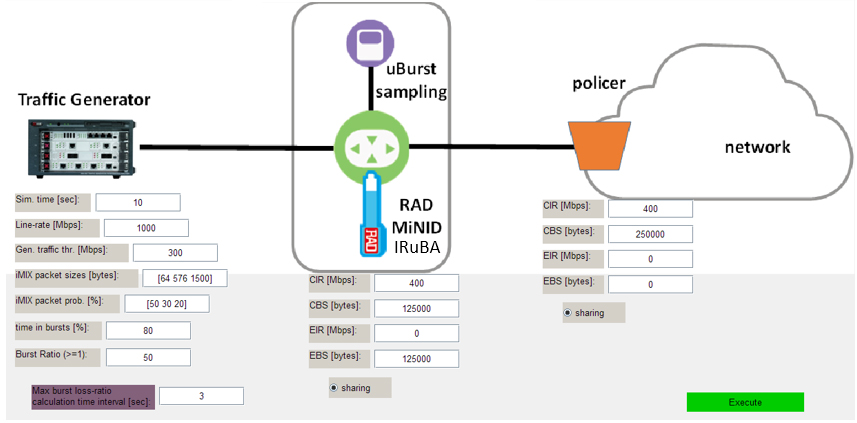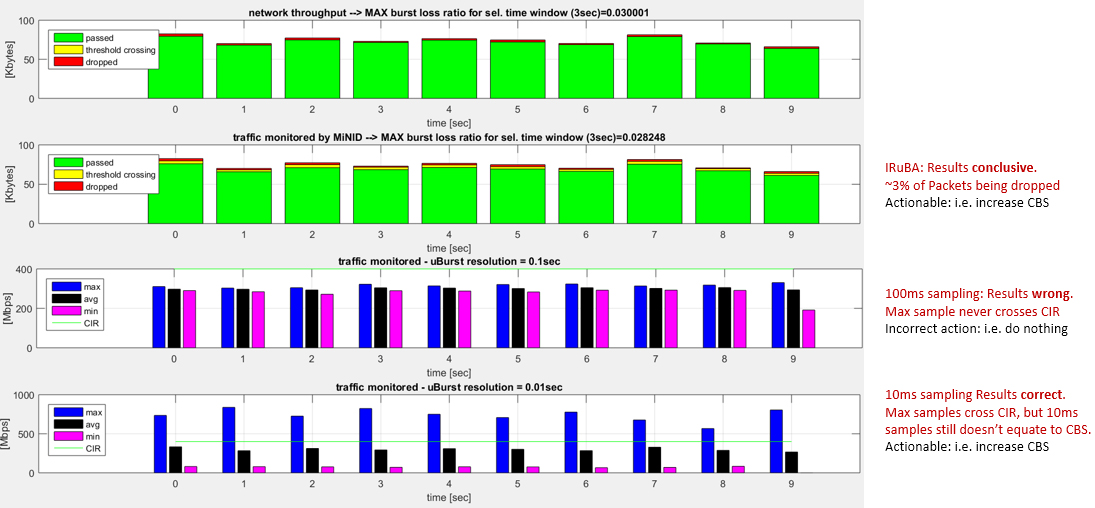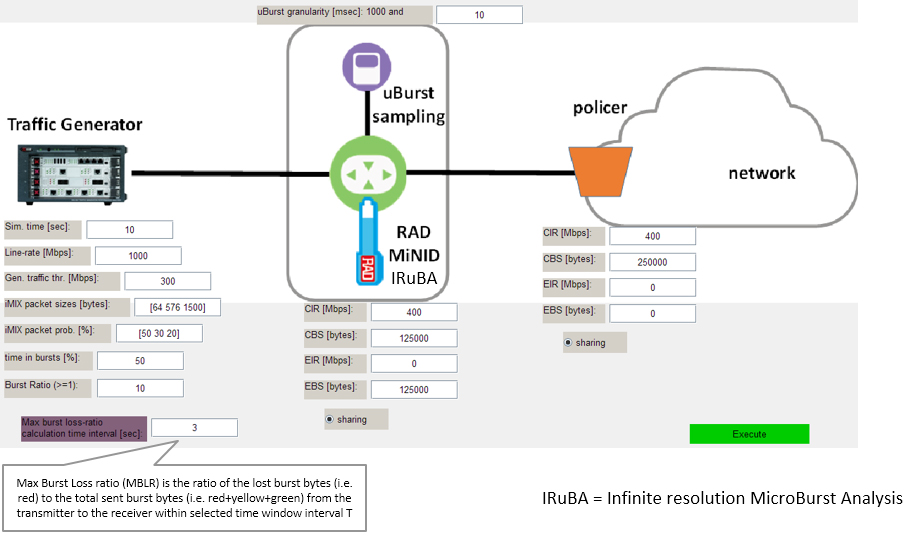
Your Network's Edge®
Blog Post
You are here
Performance Assurance with Infinite Resolution Microburst Analysis – Part 2
In part 1 of the blog post, we have discussed microburst origin as well as effect. We have also explained why all existing microbursts quantification methods fail, in one way or another, to yield a true measurement of microburst within a given network. This part will discuss a new innovative approach for microbursts quantification, developed by RAD.
Infinite Resolution (IR) microburst analysis
RAD’s infinite resolution microburst analysis methodology more accurately identifies and measures microbursts by utilizing the same token bucket algorithms deployed by network service providers to determine whether traffic exceeds defined burst thresholds.
With Infinite Resolution microBurst Analysis (IRuBA), a dual token-bucket apparatus (the same one that is used in MEF policers), configured to predefined levels of CIR, CBS, EIR, and EBS, is used to measure and quantify network microbursts. The principal is simple. “Suffering” from an excessive amount of microbursts will not violate the network’s CIR as these microburst events are relatively infrequent and, hence, are easily averaged out over time. However, if the microburst depth exceeds the network’s CBS (the network’s memory or, in other words, the ability of the network to absorb the incoming traffic bursts), packet loss will occur. By continuously monitoring the dual token-bucket green/yellow/red count readings over time, an excess microburst behavior can be easily and immediately detected. Furthermore, the amount of yellow/red counts is in direct relation to the amount of network memory (CBS) that is missing in order to fully and successfully absorb it without creating packet loss.
The following two examples will compare Infinite Resolution Microburst Analysis (upper two results accounting for the network policer behavior in comparison to the IRuBA measurement) with legacy Microburst Sampling (bottom two results at 100ms and 10ms sampling intervals). The CIR/CBS values selected are typical for wholesale backhaul services for mobile operators. The line rate and generated iMIX traffic (packet sizes and probabilities) are also identical but with two differences:
- Time in burst – i.e. overall time that the network is in burst state (as a % of the total runtime)
- Burst ratio – The network’s burstiness factor. 1 means no network burstiness and >1 means network exhibits burstiness realized by long periods of “normal” network behavior with occasional bursts. The higher the ratio, the more bursty the network is.
In example 1, the Time in Burst and Burst ratio are taken to be 80% and 50%, respectively, indicating a network with strong microburst characteristics. In example 2, these values are taken to be 50% and 10%, simulating a network having a much more moderate microburst behavior


Example 1: Significant time in burst and very high burst ratio


Example 2: Lower time in burst and more moderate burst ratio
Key Takeaways
- Infinite Resolution microburst analysis (IRuBA) delivers consistently accurate results.
- Max Burst loss ratio is helpful to decide whether an action, such as CBS increase, is required.
- Microburst sampling method results are inaccurate, inconsistent and not actionable. E.g. increasing Microburst sampling resolution helped in example 1, but caused damage in example 2.
- Microburst sampling method, even with fine resolution of 10ms samples, is misaligned with CBS and therefore leads to incorrect actions.
- Even finer resolution sampling (e.g. 1ms) is still inconclusive. Further reducing sampling interval would increase burstiness until ultimately MAX usage = port speed which is meaningless.
- Infinite Resolution Microburst analysis is based on measured or contracted network CIR/CBS and results are therefore reliable and actionable – especially if acceptable Max Burst loss ratio is known
Check out our MiNID IRuBA here.
About RAD's Blog
We’ll be blogging on a wide range of hot topics affecting service providers and critical infrastructure network operators. Our resident experts will be discussing vCPE, Cyber Security, 5G, Industrial IoT and much, much more.

